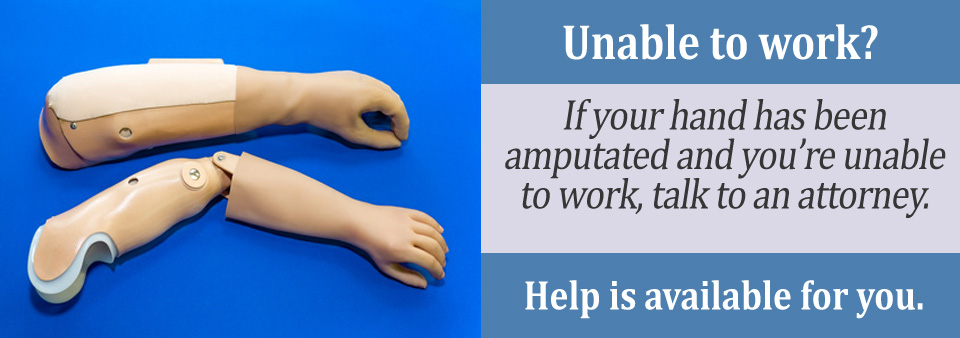Close to 2 million people are living with limb loss in the United States. While less common than lower leg amputations, upper extremity amputations are most frequently caused by accidents. Over two-thirds of trauma-related amputations happen to people under the age of 45. The long-term prognosis of the patient depends on the reason for the amputation.
If you have had an upper extremity amputation and are unable to work to your full capacity, there could be financial help available to you. The Social Security Disability Insurance (SSDI) program was created to assist those who have become disabled due to a health issue such as amputation.
What Exactly is an Amputation of an Upper Extremity?
Upper extremity amputation is a surgery to remove all or part of the arms, hands, or fingers. The main causes for an upper body amputation would be accidents or sudden trauma.
The most common accidents that contribute to upper body amputation are traffic accidents, farm and lawnmower accidents, and firearm and firework accidents. Other reasons for upper body amputation may include vascular disease, acute infections, cancer, or frostbite.
The main categories of upper-limb amputations are:
- Hand and partial hand amputation: The removal of any finger, thumb, or portion of the hand below the wrist
- Wrist disarticulation: Removal of the hand at the wrist
- Transradial: Amputation of the arm below the elbow
- Transhumeral: Amputation of the arm above the elbow, but below the shoulder
- Shoulder disarticulation: Amputation of the arm at the shoulder
An amputation requires a hospital stay, and there are possible complications associated with the surgery. For example, some patients experience difficulty with wound healing or infection. Other complications include blood clots and cardiovascular issues.
Close to 80% of amputees experience phantom limb pain (PLP), which is a painful sensation that appears to come from the limb that is no longer there. Phantom limb pain is treated with medications and non-pharmacological methods of pain relief such as acupuncture, massage, and biofeedback.
Many people who need an amputation suffer from depression, anxiety, and grief. For some, these emotions can significantly influence their ability to work and live.
The recovery process varies for amputees. While some people choose to use prosthetic devices (an artificial replacement for a missing limb), many upper body amputees learn how to adapt to their lives without a prosthesis.

What Symptoms Do I Need to Qualify?
Those who require an upper body amputation may face a broad range of symptoms, and they all might affect their ability to work differently.
The Social Security Administration (SSA) lists the criteria for disability benefits in the Social Security Blue Book. Here are some signs that you might qualify for financial assistance from the SSA:
- If you have had both of your hands amputated, you will automatically qualify for financial support from the SSA.
- If you have had an upper body amputation and a lower body amputation, and you now have difficulty moving and ambulating, you will likely be eligible for benefits.
- Often, an amputation is a result of other significant health issues. If you have vascular disease, cardiac disease, or other health-related issues, the SSA will take those into consideration when reviewing your application.
- As discussed above, amputees often suffer from mental and emotional difficulties that can make work very challenging. If you are suffering from psychological symptoms related to your amputation, you may qualify for help.
Do I Qualify for Social Security Benefits?
To be eligible for Social Security benefits, your medical records will need to show that your health difficulties are severe enough to prevent you from working at a level that would support you.
Additionally, the symptoms related to your amputation need to be expected to last for at least 12 months. Many amputees will recover earlier than this unless there are several health comorbidities.
What Information Will I Need to Provide?
When applying for Social Security benefits related to your amputation, you may be asked to provide the following:
- Surgical notes from your amputation
- Extensive notes from your physician, including documentation of your ability to ambulate, with or without a prosthetic device, as well as any complications that have occurred as a result of your amputation
- X-rays or other imaging results that address your amputation
- Notes from your doctor, physical therapist, or other health care provider that describe your symptoms and prognosis
If you are missing any of the above information, contact your doctor or hospital immediately. The more medical evidence that you have on your side, the better your chances of receiving SSDI benefits for your brain tumor.
What’s Next?
If you are an amputee who is having difficulty working, you should contact a disability advocate or lawyer in your area. Amputation surgery and recovery can be quite challenging. A qualified attorney can help you navigate the Social Security application process, leaving you time to focus on what’s most important: your health.